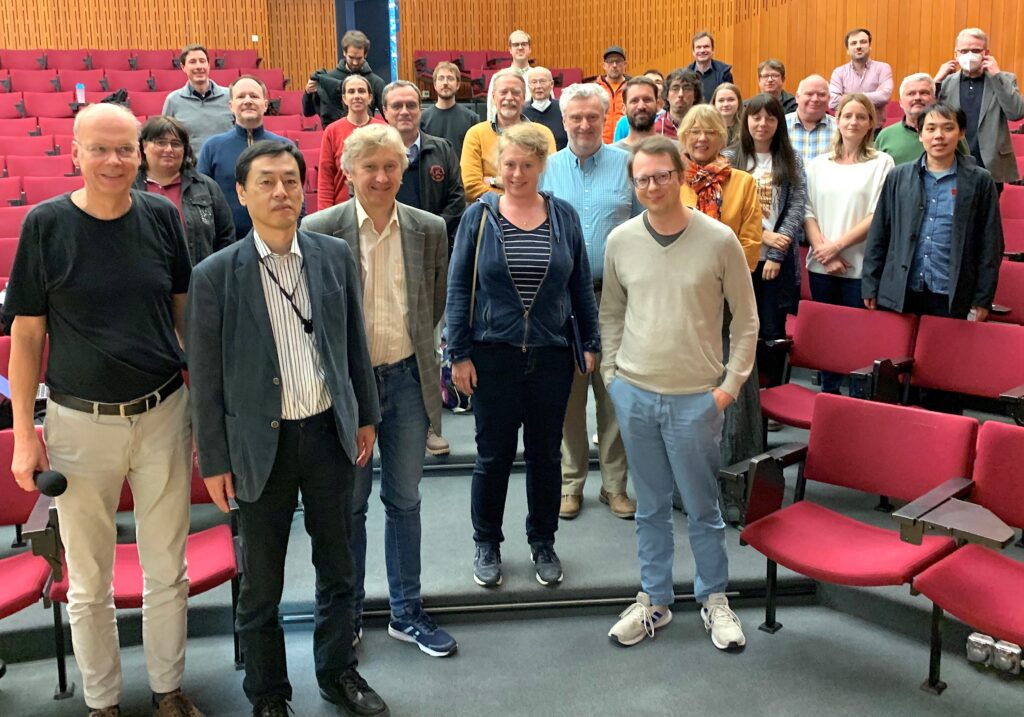One thing is pretty certain: the next big machine in particle physics is most likely going to be an electron-positron “Higgs factory” collider. What is not so certain is which of the different collider options currently being considered will be realised. The ILD collaboration, creator of one of the two detector concepts for the International Linear Collider (ILC), is now checking how ILD would perform at different colliders than ILC, and is deepening collaborations with these collider concepts. ILD released its strategy in September.

ILD’s deep roots in the world of the ILC are not only evident from its name (ILD stands for “International Large Detector”), but from its fundamental design. From the very start, ILD has been optimised for the ILC environment, with collision energies of up to 1 TeV, a power-pulsing scheme adapted to the ILC’s bunch train beam structure, and an overall focus on complete particle and event reconstruction in the particle flow concept, down to very small angles. The collaboration stresses that it continues to be convinced that ILC is the technically most construction-ready option for a Higgs factory currently under consideration, and that ILC will remain at the core of ILD. However, it recognises the importance to make the case for a Higgs factory more globally, and to demonstrate experimental capabilities independent of a particular collider technology. As stated in the ILD Strategy Document, “We are interested in a detector which can deliver the science, independent of where this experiment could take place.”
“The ILD concept we have proposed in the design report is the result of a large amount of work on designing a detector and understanding its performance. It is essentially ready to be built, should the ILC move forward,” says ILD spokesperson Ties Behnke from DESY in Germany. “ILD however is not static. It is a platform for new technological developments, and is constantly evolving to push detector technologies for Higgs factories forward. We are now looking at aspects of the ILD concept which might need to be changed, should ILD operate at other Higgs factory colliders.”
The other electron-positron (e+e-) Higgs factory options on the table are the compact linear collider CLIC, the Future Circular Collider at CERN in the e+e- configuration, FCC-ee, and the Circular Electron Positron Collider CEPC – or even newer proposals like the Cool Copper Collider. “ILD could contribute unique expertise to many aspects of these proposals. Already in the past collaboration among detector developers has been strong, so we are by no means starting from scratch,” says Behnke.
The desired outcomes of this work programme are concrete developments on how specific aspects of ILD and technologies used in ILD could be applied to non-ILC concepts. Eventually detector variants of ILD could be developed, which would ensure that ILD would deliver the same performance at a different collider “With the rather generic software suite ILD has developed and its strong involvement in the global key4hep software initiative, ILD is very well placed to move quickly and decisively,” says Daniel Jeans (KEK), who is software coordinator of ILD together with Frank Gaede (DESY) and chair of the ILD institute assembly, which recently approved the new strategy.
The tracking region is one of the areas identified for further study. The very forward tracking region in particular, a region near the beampipe and the collision point, is very different from collider to collider and poses very different challenges. Here major adjustments of the ILD concept will be needed, to operate ILD e.g. at the FCC-ee.
A key component of the ILD is a large-volume time projection chamber, which, combined with an advanced silicon tracker, offers excellent tracking performance and in addition good particle identification capabilities. Whether such a TPC could operate at the other collider options needs to be studied in detail, and might well require rather different technical solutions.
Another challenge is the bunch structure. The ILC beam comes in bunch trains, which leaves time for the detector systems to be switched off between bunches in order to save power and reduce subdetectors’ cooling requirements. At a circular collider beam bunches come in a continuous stream, so ILD has to rethink its approach to thermal management, while minimising additional in-active material, which would compromise the precision of the detector.
Particle flow remains the central design element of the ILD detector. Its performance is closely tied to aspects of the detector like granularity, tracker performance, and overall hermeticity of the detector. All of these aspects might be rather different at different collider options, and the degree to which these changes impact the eventual science delivered by the experiment needs careful scrutiny.
ILD profits from a well-developed collaboration structure and a well-developed suite of software tools and algorithms, which allow the group to do sophisticated and reliable studies of the detector performance rather quickly.
After agreeing internally on its new strategy, ILD is now actively reaching out to detector concept groups at other collider options, aiming to establish cooperation. The strategy was for the first time publicly presented at the recent ECFA meeting on Higgs/ Top/ EW factories at DESY in Hamburg.

Recent Comments